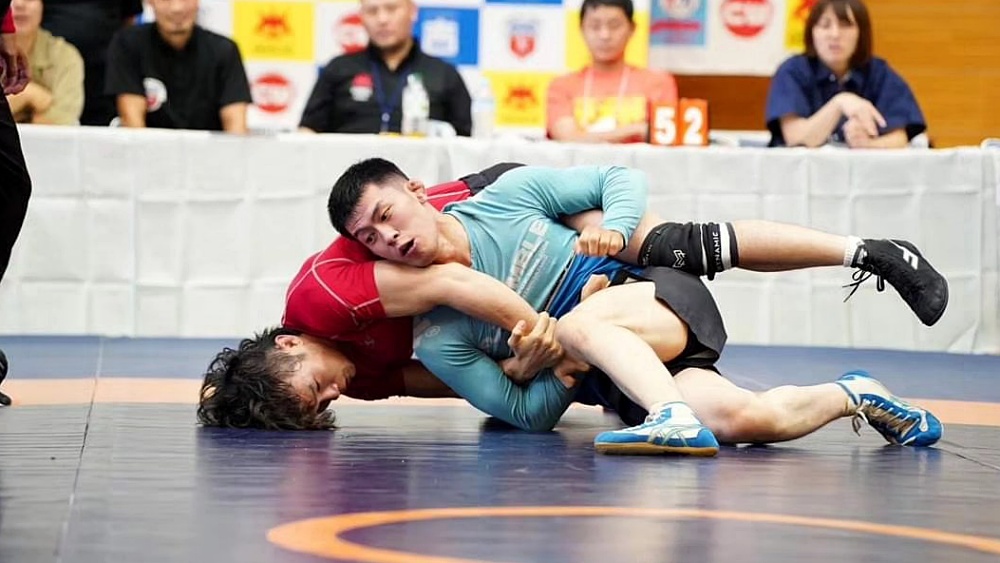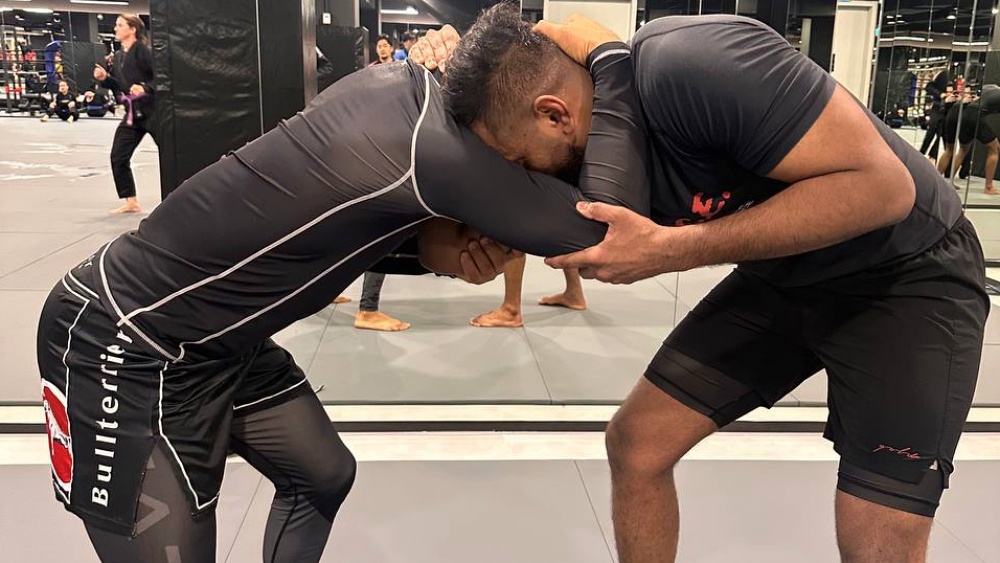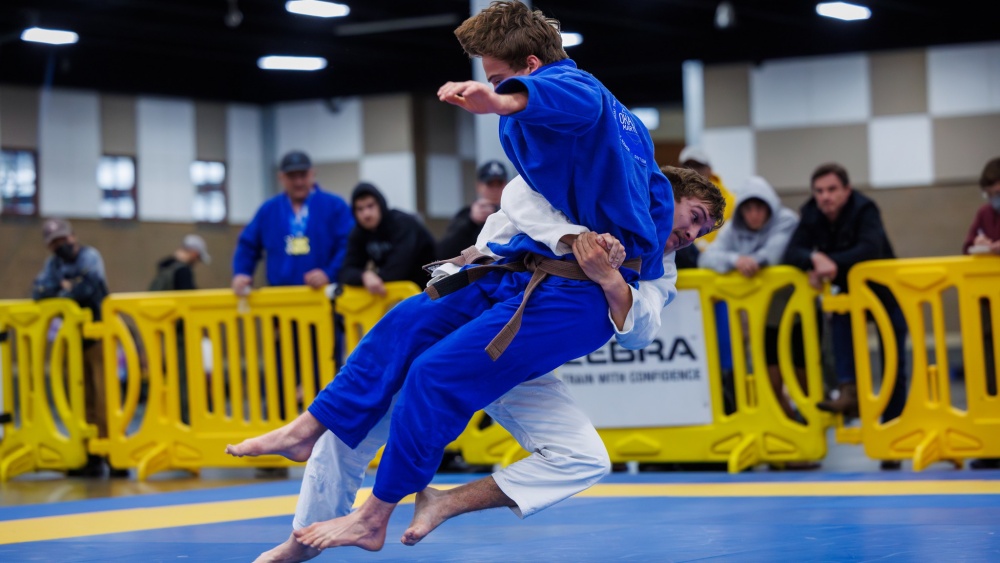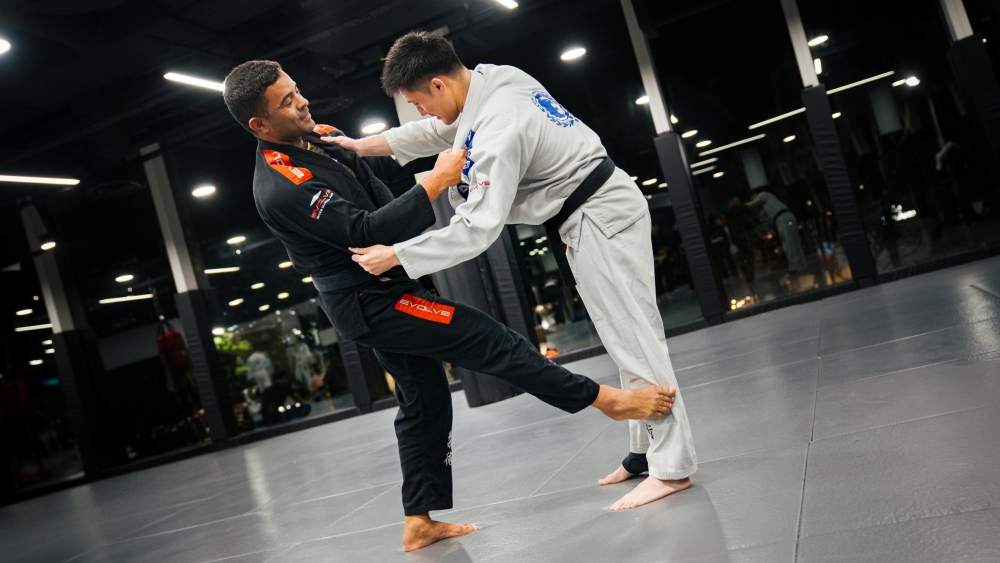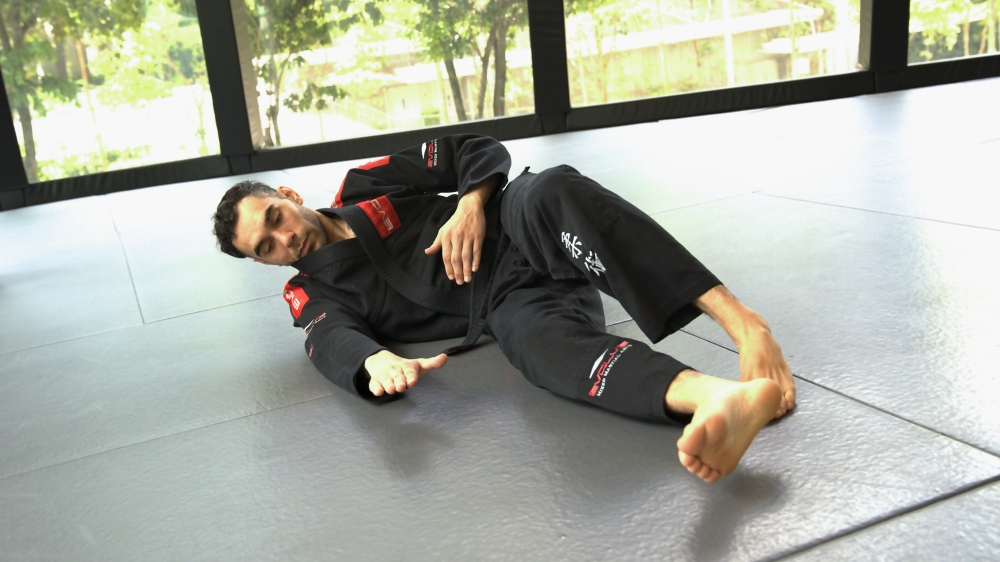Chain wrestling is a critical concept in both Brazilian Jiu-Jitsu and wrestling. It refers to the ability to seamlessly transition from one technique to another, keeping your opponent off balance and continually forcing them to react. This approach not only increases your chances of securing a takedown but also ensures that you remain in control of the situation, adapting to your opponent’s defenses with a series of well-coordinated moves. By mastering chain wrestling techniques, you can develop a dynamic and effective takedown game. In this article, we will study five chain wrestling sequences that you can use to take down your opponents.
Five Chain Wrestling Techniques
MMA fighter and YouTube sensation Jeff Chan shares his top chain wrestling techniques in this video. He is one of the best at incorporating various grappling techniques into cohesive systems and is definitely one of the best teachers you’ll find online.
1) Double Leg To Double Underhook (Back Take) To Knee Tap
The double leg takedown is one of the most fundamental and widely used techniques in wrestling and BJJ. It involves driving your shoulder into your opponent’s torso while securing both of their legs to force them to the ground. However, when your opponent defends the double leg by sprawling or pulling their legs back, transitioning to a double underhook and taking their back is an effective follow-up.
After initiating the double leg, if your opponent manages to sprawl or defend, quickly release their legs and shoot your arms underneath their armpits to secure double underhooks. From this position, you can lift them slightly or simply use your leverage to circle around to their back. Once you have their back, you can secure your position or look for a finishing move like a rear-naked choke.
If your opponent resists or tries to peel your arms away, you can transition to a knee tap. With one hand, push on their knee while using your underhooks to drive them off balance, forcing them to the mat. This chain of moves keeps your opponent guessing and allows you to control the tempo of the match.
2) Osoto Gari To Arm Drag (Back Take) To Double Leg
The Osoto Gari is a classic Judo throw that can be effectively used in a wrestling or BJJ context. It involves sweeping your opponent’s leg out from under them while using your upper body to direct their fall. This throw is powerful, but if your opponent resists or counters, you can transition into an arm drag to take their back, followed by a double leg takedown.
Begin with the Osoto Gari by stepping across your opponent’s body and attempting to sweep their leg with yours. If they counter by shifting their weight back or stepping out of the sweep, immediately grab their arm and perform an arm drag. The arm drag will pull them off balance and allow you to move behind them, securing their back.
Once you’ve taken their back, your opponent may try to escape by turning back into you or dropping to their knees. At this point, switch to a double leg takedown by securing their legs and driving forward to complete the takedown. This sequence demonstrates how you can flow between standing and ground techniques to maintain control.
3) Knee Tap To Uchi Mata To Ankle Pick
The knee tap is a simple but effective takedown that involves pushing on your opponent’s knee to off-balance them while simultaneously driving your body forward. This technique is particularly useful against opponents who are trying to maintain a low, defensive posture. However, if your opponent counters the knee tap by lifting their leg or shifting their weight, you can transition to the Uchi Mata or an ankle pick.
Start with the knee tap by stepping to the side of your opponent and pushing on their knee while driving your body into them. If they counter by lifting their leg or resisting the push, quickly pivot and perform a Uchi Mata, a Judo throw that involves sweeping your leg between your opponent’s legs and lifting them over your hip.
If the Uchi Mata doesn’t succeed or your opponent resists by stepping back, transition to an ankle pick. Drop down and grab their ankle while using your other hand to push them off balance, causing them to fall. This combination keeps your opponent off balance and forces them to constantly defend against multiple attacks.
4) Single Leg To Double Leg Takedown
The single leg takedown is another fundamental technique in wrestling and BJJ, where you grab one of your opponent’s legs and drive forward to bring them to the ground. However, if your opponent defends by hopping on one leg, you can transition to a double leg takedown to finish the sequence.
Start by shooting for a single leg, grabbing one of your opponent’s legs, and pulling it up to your chest. If they defend by hopping or balancing on their free leg, transition to a double leg by dropping your level and reaching for their other leg. Drive forward with your shoulder while securing both legs to complete the takedown.
The transition from a single leg to a double leg is a classic example of chain wrestling. By moving from one attack to another, you force your opponent to continually adjust, making it difficult for them to mount an effective defense.
5) Double Leg (Legs To Left) To Double Leg (Legs to Right)
The double leg takedown can be made even more effective by adding directional changes to your attack. By switching the direction of your double leg, you can catch your opponent off guard and increase your chances of completing the takedown.
Start with a standard double leg takedown, driving your shoulder into your opponent’s hip area and attempting to secure both of their legs. If they defend by sprawling or pushing your head to one side, quickly switch the direction of your attack. If your initial attack was to the left, change direction and drive their legs to the right, or vice versa.
This change in direction can disrupt your opponent’s balance and make it difficult for them to defend. The key is to execute the switch smoothly and without hesitation, keeping your opponent off balance and unable to predict your next move.
Conclusion
Chain wrestling is an essential skill for any grappler, allowing you to maintain control and keep your opponent on the defensive. You can develop a dynamic and versatile takedown game by mastering these five chain wrestling techniques we discussed in this article. As with any technique in BJJ or wrestling, consistent practice and drilling are key to developing proficiency in these sequences. By incorporating chain wrestling into your daily training, you’ll become a more well-rounded and effective grappler, ready to take on any opponent.
You may also like:
